Back to the Bauhaus school days of Swiss polymath Max Bill
An exhibition at Hauser & Wirth Zurich explores the multilayered bonds formed between the artist and his fellow students at the Dessau institution
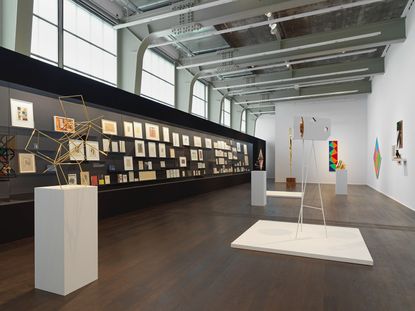
‘He was a workaholic, but he was also a womaniser,’ Dr Angela Thomas Schmid recalls – not without affection – speaking of her late husband, the Swiss artist, architect, and designer Max Bill. The art historian is the president of Bill’s estate, and the curator of a small but insightful new exhibition at Hauser & Wirth Zurich, exploring his ongoing exchanges with the masters of the Bauhaus.
Trained as a silversmith and an insatiable autodidact, Bill was only 16 when he had his first break abroad, thanks to Sophie Taeuber-Arp who spotted his talent at the design school in Zurich and presented his functional works in Paris for the International Exhibition of Modern Decorative and Industrial Arts in 1925. And it was the Parisian gallerist and patron Jeanne Bucher – whom Bill met later – who would push him to find his own style.


Above, Max Bill’s Bauhaus student identification card. Below, Haus Bill, the artist’s residence and studio in Zumikon, near Zurich.
His participation in the exhibition at the Grand Palais and a trip with Taeuber-Arp to Paris instilled a great sense of confidence in Bill and inspired him to study modernist architecture. The following year, hearing that a new Bauhaus school was opening in Dessau, Bill applied and was accepted, aged 18, enrolling with the first cohort of students to attend in 1926.
He was taught by Josef Albers, Paul Klee, Wassily Kandinsky, Oskar Schlemmer, and László Moholy-Nagy (the latter is concurrently subject of an exhibition at Hauser & Wirth’s London gallery). Though he would continue to engage with the Bauhaus way of thinking, Bill later rejected an opportunity to join the teaching staff at the Bauhaus school in Chicago. Instead he founded, designed and built his own school in 1953, the Hoschschule fur Gestaltung, in Ulm.
RELATED STORY

Although these leading men of the Bauhaus undoubtedly had a major impact on Bill’s practice and thinking, his path was shaped just as much by the strong female students he met at the school. In the two years he would spend there, he ‘fell in love four times’, Schmid notes. But his fascination with women wasn’t only sexual interest. Impressed by the ideas of group of left wing, emancipated women with bobbed haircuts smoking cigarettes in the weaving workshops, it was their uninhibited dancing, reportedly, that encouraged Bill to unearth his own erotic energy.
Bill’s friendships with Katt Both and Hilde Rantzsch in particular are celebrated in a 1927 portrait he drew of the pair, cigarettes dangling from their mouths. His love of feminine forms is playfully commemorated in a photograph of Bill dressed up with breasts for a theatre performance at Dessau. Seen in parallel to the curving, swirling, circuitous forms of two resplendent metal sculptures, one of which is presented in public for the first time, his appreciation seems formal and deeper rooted.
As Schmid shooed away two men standing in front of a vitrine to make room to explain examples of Bill’s work better, it was also clear that the artist’s legacy in the future will continue to be carefully guided by female forces.
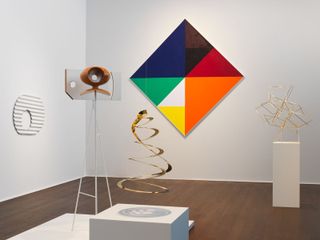
Max bill bauhaus constellations’ at Hauser & Wirth Zurich. © Angela Thomas Schmid / 2019 ProLitteris, Zurich.
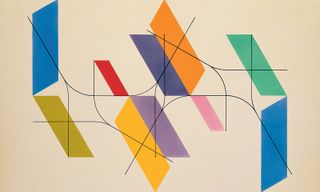
konstruktion auf der formel a² + b² = c² (construction from formula a² + b² = c²), 1937, by Max Bill, multicoloured gouache and ink on cardboard.

Construction dans la sphere, 1918, by Georges Vantongerloo, bronze.
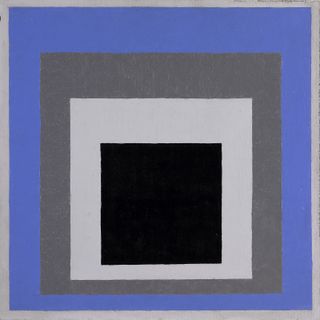
Study to homage to the square: apodictic, 1950-1954, by Josef Albers, oil on masonite.

Max bill bauhaus constellations’ at Hauser & Wirth Zurich. © Angela Thomas Schmid / 2019 ProLitteris, Zurich.
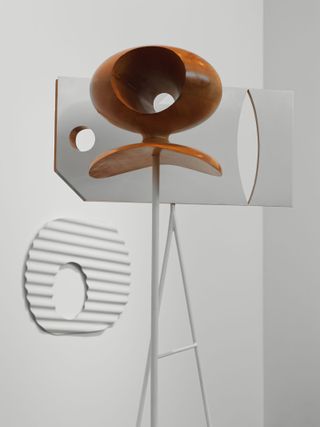
Max bill bauhaus constellations’ at Hauser & Wirth Zurich.
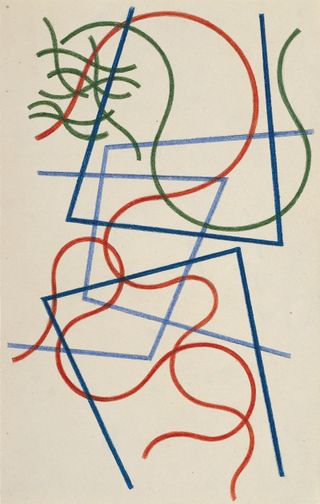
Rythmes verticaux-horizontaux libres (Free, vertical-horizontal rhythms), 1919, by Sophie Taeuber-Arp, gouache on paper.
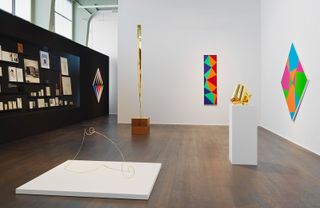
Max bill bauhaus constellations’ at Hauser & Wirth Zurich. © Angela Thomas Schmid / 2019 ProLitteris, Zurich.
INFORMATION
‘Max bill bauhaus constellations’, 9 June – 14 September, Hauser & Wirth. hauserwirth.com
ADDRESS
Hauser & Wirth
Limmatstrasse 270
8005 Zurich
Wallpaper* Newsletter
Receive our daily digest of inspiration, escapism and design stories from around the world direct to your inbox
Charlotte Jansen is a journalist and the author of two books on photography, Girl on Girl (2017) and Photography Now (2021). She is commissioning editor at Elephant magazine and has written on contemporary art and culture for The Guardian, the Financial Times, ELLE, the British Journal of Photography, Frieze and Artsy. Jansen is also presenter of Dior Talks podcast series, The Female Gaze.
-
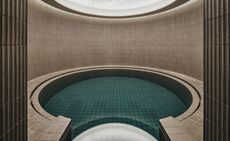 Find yourself at Six Senses Kyoto, the brand's breathtaking Japan debut
Find yourself at Six Senses Kyoto, the brand's breathtaking Japan debutSix Senses Kyoto opens its doors boasting tranquil, luxurious interiors by Blink Design Group
By Danielle Demetriou Published
-
 Shigeru Ban’s mini Paper Log House welcomed at The Glass House
Shigeru Ban’s mini Paper Log House welcomed at The Glass House'Shigeru Ban: The Paper Log House' is shown at The Glass House in New Canaan, USA as the house museum of American architect Philip Johnson plays host to the Japanese architect’s model temporary home concept
By Adrian Madlener Published
-
 Artist Mickalene Thomas wrestles with notions of Black beauty, female empowerment and love
Artist Mickalene Thomas wrestles with notions of Black beauty, female empowerment and love'Mickalene Thomas: All About Love’, a touring exhibition, considers Black female representation
By Hannah Silver Published
-
 Dan Flavin’s fluorescent lights light up Basel
Dan Flavin’s fluorescent lights light up Basel‘Dedications in Lights’ celebrates Dan Flavin’s conceptual works, at Kunstmuseum Basel
By Amah-Rose Abrams Published
-
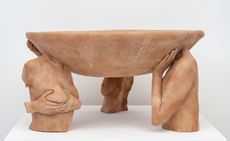 Who is the future of British art? Hauser & Wirth Somerset finds out
Who is the future of British art? Hauser & Wirth Somerset finds out‘Present Tense’ at Hauser & Wirth Somerset showcases some of Britain’s most exciting emerging talents with a group show of 23 artists
By Mary Cleary Published
-
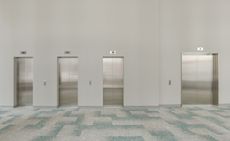 Avery Singer considers 9/11 trauma and corporate anonymity at Hauser & Wirth
Avery Singer considers 9/11 trauma and corporate anonymity at Hauser & Wirth‘Avery Singer: Free Fall’ opens at Hauser & Wirth, London, melding a serene office aesthetic with moments of horror
By Emily Steer Published
-
 Frieze London 2023: what to see and do
Frieze London 2023: what to see and doEverything you want to see at Frieze London 2023 and around the city in our frequently updated guide
By Hannah Silver Last updated
-
 Hospital Rooms and Hauser & Wirth unite for a sensorial London exhibition and auction
Hospital Rooms and Hauser & Wirth unite for a sensorial London exhibition and auctionHospital Rooms and Hauser & Wirth are working together to raise money for arts and mental health charities
By Hannah Silver Published
-
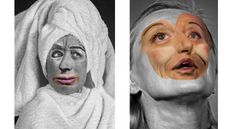 Cindy Sherman’s freaky new portrait collages dissect the divided self
Cindy Sherman’s freaky new portrait collages dissect the divided selfWe preview Cindy Sherman’s new portraits, on view at Hauser & Wirth Zurich during Zurich Art Weekend – which will see digitally manipulated collages explore the many facets of society
By Harriet Lloyd-Smith Published
-
 Gary Simmons on the erasure of racist tropes: ‘I don't want them to be forgotten for their menace’
Gary Simmons on the erasure of racist tropes: ‘I don't want them to be forgotten for their menace’In Gary Simmons’ new show, ‘This Must Be the Place’ at Hauser & Wirth, London, the artist explores the process of cultural erasure, and the traces it leaves behind
By Amah-Rose Abrams Published
-
 All eyes on Christina Quarles, the painter inventing a new figurative language
All eyes on Christina Quarles, the painter inventing a new figurative languageLos Angeles-based artist Christina Quarles is in her element, with two major solo shows underway at Hamburger Bahnhof and Hauser & Wirth Menorca
By Emily McDermott Published